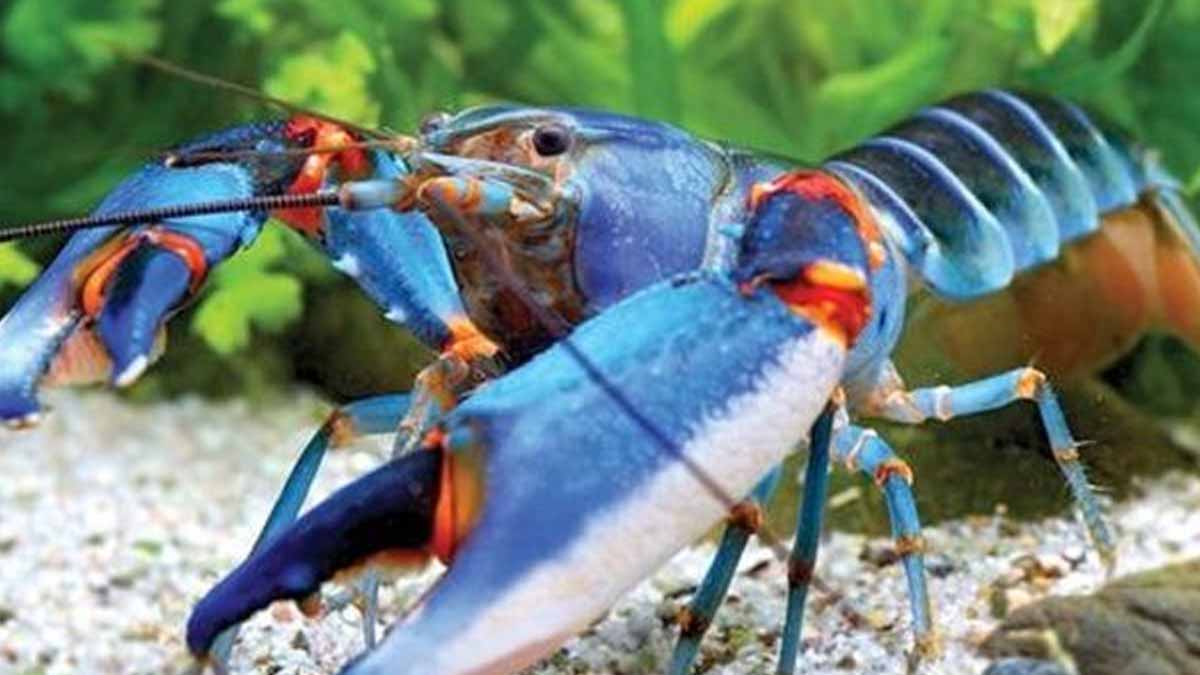A flash of turquoise and lilac enchanted aquarists for years, while science stayed silent. The pet-trade favorite finally carries a formal identity, and the label changes how we talk about origins, trade, and risk. Because the animal lived in plain sight, its path from tanks to taxonomy says a lot about speed, oversight, and data. The verdict is in: a new species has a name, a story, and consequences that reach far beyond a glass box.
From pet-store mystery to formal identity
For nearly two decades, dealers shipped thousands of these crayfish across Europe, the United States, Japan, and Indonesia, and hobbyists admired the pastel sheen. Importers coined nicknames, and catalogues grouped similar animals, while museum drawers lacked a single voucher specimen. The colors dazzled, and the mixed hues confused comparisons with known taxa, so the paperwork never caught up. As the trade grew, regulation lagged, and questions stacked up without answers in the scientific literature.
In 2023, researchers inspecting Indonesian shipments recognized the gap and followed the trail. The team, led by Jiří Patoka at the Czech University of Life Sciences Prague, examined the animals and documented traits with care. The crustacean received the name Cherax pulverulentus, which means “covered with dust,” a nod to the peppered specks across its body. Because formal naming anchors identity, the pet-store mystery finally turned into a new species with clear diagnostic features and a place in the genus.
How scientists proved a new species beyond color alone
Color misleads when trade selects for striking traits, so the team leaned on morphometrics and genetics. They measured claw shape, eye size, and rostrum length against 38 close relatives, while they recorded consistent differences. DNA barcoding of the mitochondrial COI gene then showed at least 2% divergence from all known congeners, which supports distinct status. Nuclear 28S sequences placed the lineage as a sister to Cherax pulcher, and the split held across markers, which closed the case.
Because names guide action, the label affects customs, aquaculture, and conservation. With a defined description, officials can identify shipments, while labs can confirm identities when seizures occur. Hatcheries gain clarity, since mislabeling breeds hybrids that can erode source-range genetics. And while the market rewards color, science now provides a stable reference, so sellers, buyers, and regulators can talk about the same animal, using the same terms, with far fewer doubts.
What the dusty crayfish does to streams and trade
Field notes place the species in shaded headwater creeks near Ayamaru Lake on the Bird’s Head Peninsula of western New Guinea. Water sits around 75°F, oxygen stays high, and sandy beds with leaf litter allow shallow burrows, while the canopy lowers stress. Local fishers collect juveniles during the dry season as levels drop, and the practice feeds exports, while population trends remain unknown. Because data are thin, the team urges ecological studies that can set sustainable quotas before demand outruns supply.
During surveys, one individual appeared in a thermal spring near Budapest, which signals a release by an aquarist. Thermal refuges let tropical species persist in temperate cities, and escapees can outcompete detritivores, alter nutrient cycling, and eat amphibian eggs. As history shows with marbled and signal crayfish, non-natives also spread the pathogen Aphanomyces astaci, which causes crayfish plague. A few carriers can empty streams, while managers struggle to respond fast.
Numbers, genes, and safeguards behind this new species
The species shows two forms that traders long blurred together : a purple form with turquoise dusted by violet specks and chalk-white joints, and a blue form with deep navy drifting to black around the claws. Bright orange stripes frame the abdomen and legs, and the contrast is striking inside a tank. The “dusty” epithet captures the pinpoint spots, which anchor the look, and the name separates it from Cherax pulcher described in 2015, which clarifies identity across catalogs.
Genetic data do the heaviest lifting, while measurements reinforce the split. Because COI divergence exceeded 2% across the genus, the barcoding threshold supported recognition. Nuclear 28S grouped the lineage as a sister to C. pulcher, while differences stayed stable. According to the authors, the animal has been in the ornamental trade for at least 21 years, so taxonomy trailed commerce. The result gives regulators a toolkit for forensic identifications when shipments raise questions about origin or quota.
Another topic: responsible aquarists, captive breeding, and citizen data
Legal frameworks, including CITES appendices, depend on precise lists, and unnamed organisms fall outside control. With a valid description, authorities can evaluate exports, assign codes, and assess wild harvest pressure, while reports gain consistency. Aquaculture biosecurity also benefits, because diagnostic characters reduce cross-breeding errors that produce hybrids with unclear status. And when sellers follow the same labels, buyers make choices with less confusion and fewer accidental mixes inside breeding projects.
Citizen scientists can accelerate range mapping by photographing stream fauna with location tags, while agencies collate records. Responsible hobbyists help when they choose captive-bred stock, quarantine arrivals, and keep pets out of local waterways, because releases seed problems. Stores can add care sheets that explain temperature, diet, and risk, and the message travels with each sale. As the community adopts these steps, a new species can light aquariums without dimming the health of native streams.
Why careful stewardship now defines the long life of this find
Naming reached the finish line, while the work of care now begins. The animal’s path from storefront tanks to confirmed identity shows how markets move faster than methods, and how science catches up with patient checks. A formal label unlocks rules, strengthens biosecurity, and improves breeding ethics, and the same clarity helps buyers act wisely. Because the label marks a new species, the next decisions decide whether streams remain rich while aquariums stay vivid.
